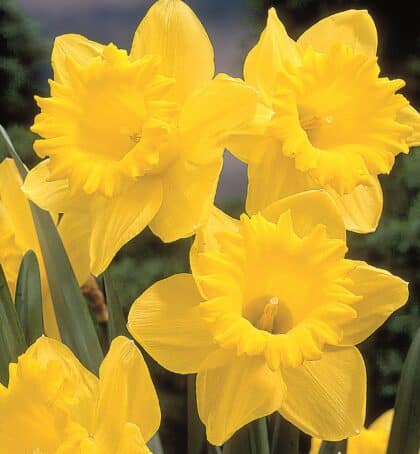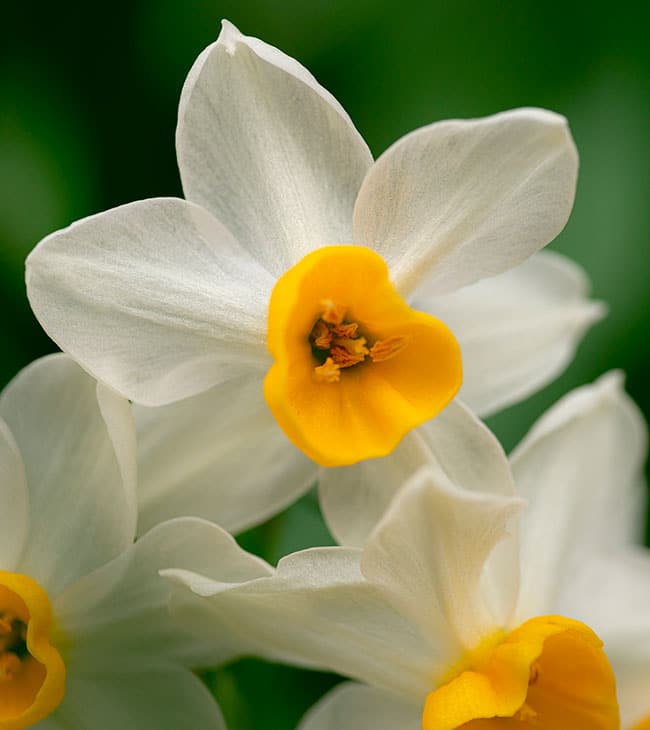
See our Trumpet Daffodils
Trumpet Daffodils
It can often seem quite daunting to choose just the right plant, given the enormous range from which to choose. Start with the desired position within your garden. Here are some considerations to take into account.
Daily Telegraph (London)
The late Fred Whitsey posed the conundrum that when buying daffodils, you can pay more than double for what seems to be the same thing. The Daily Telegraph grew samples, in batches of 10, from different sources at different prices. A member of the Royal Horticultural Society’s Narcissus committee assessed the results. Most batches gave at least 10 flowers, but the yield rose to 26 in one case. Some flowers were dismissed as poor while others got a top rating. The plants were also studied for their capacity for increase. This was where the variation showed most.
Some samples could be relied upon the give a 100% more in the following season, others much less. In several of the samples only 1 of the 10 original bulbs would yield another that would flower. “The conundrum was solved. It became a matter of investment. Increase was what counted most. When you plant daffodil bulbs in the autumn, you are not only creating next spring’s flowers but providing for the future. Daffodils should be expected to “multiply”, as gardeners say.”

“The bulbs supplied by Bloms cost the most, gave the most flowers (26), were of top quality and had the potential of doubling themselves next year. The trials indicated that you get what you pay for.”
All daffodils are suitable for sunny or semi-shaded positions, although pink cupped varieties are best planted in a sunny aspect to develop their colour. Always plant in well cultivated soil. Plant the bulbs as soon as possible upon arrival; if this is not possible, store in a cool place to allow some ventilation.
Daffodils make an excellent investment as they are ideal for naturalising in the garden. They are best planted where they can be left undisturbed and when allowed to establish will afford much pleasure for many years. Plant 15-20cm (6-8inches) apart.
The secret of success is to plant the bulbs at a sufficient depth to prevent them from ever drying out. Between 12-15cm (5-6inches) of soil on top of the bulb should suffice. The biggest cause of daffodils going blind is shallow planting, which will also cause smaller flowers in future years.
Daffodils look superb in pots and containers on the patio. They should be planted in deep tubs or bowls as soon as possible upon receipt and positioned outside in the garden in a cool spot. Never allow the soil to dry out and ensure regular watering during prolonged dry periods, even in the middle of Winter. Unless you have very large containers choose from our dwarf narcissi section. Particularly recommended are the smaller free flowering cyclamineus narcissi.
After flowering in the Spring, remove the faded flowers and let the foliage die down (this usually takes at least six weeks). Daffodils benefit from regular feeding with a liquid fertiliser after flowering, we recommend intervals of 7-10 days. If your daffodils are grown in the lawn, mow round them and do not cut down until at least 6 weeks after flowering.